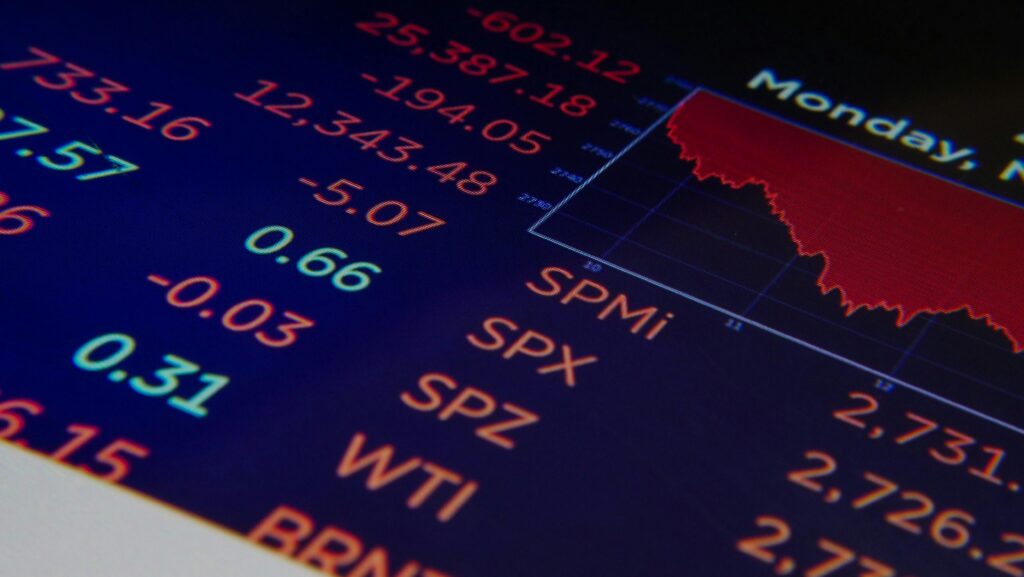Yield Curve Inversion Signals Caution for Stock Market Investors

Optimize Your Investment Strategy with AIDeep insights and actionable data to optimize investment strategies, giving you a significant edge in the market. Learn More |
The market is flashing red again—and this time, the signal is coming not only from the bond market but also from the intensifying macroeconomic pressures reverberating across equities. As of April 17, the spread between the 10-Year and 3-Month Treasury yields stands at 0.0%, continuing a string of negative and flat prints that reflect a clear inversion in the yield curve. Historically, this development has proven to be among the most reliable indicators of a looming economic slowdown, and current market behavior suggests investors are starting to price in that risk.
From February Optimism to April Caution
Just two months ago, the same spread reached a local peak of 0.27% (Feb 12), but since then, momentum has reversed sharply. The steady deterioration throughout March and early April is more than a technical signal—it’s a window into shifting sentiment, as investors recalibrate growth expectations amid rising macroeconomic headwinds.
Driving much of the recent volatility is a wave of protectionist trade policy. On April 2, President Trump announced a sweeping series of tariffs: a blanket 10% tariff on all U.S. imports, escalating to 34% on Chinese goods and 20% on EU products. The market responded in kind: the Dow Jones fell more than 1,300 points in a single session, and the S&P 500 dropped 3.15%. The bond market, true to form, rallied on flight-to-safety demand, further inverting the curve.
Although a temporary 90-day suspension on some tariffs was introduced on April 9—triggering a brief 9.5% rebound in the S&P 500—the relief rally has proven short-lived. Investors know these are band-aids, not solutions.
Macro Data Underscores the Message
The Atlanta Fed’s GDPNow model is currently forecasting a -2.8% contraction in Q1 GDP, a dramatic reversal from the early-year optimism that lifted equity indexes through February. Meanwhile, the labor market, while still historically tight, shows signs of fraying. Unemployment held at 4.2% in March, but consensus estimates suggest we could see levels breach 4.5% by mid-year if conditions continue to deteriorate.
Inflation is another pressure point. The combination of supply chain adjustments and tariff-related cost increases has kept core inflation sticky above the Fed’s 2% target. According to recent commentary from the Fed and private forecasts, elevated price levels are expected to persist through 2026–2027, forcing policymakers into a delicate balancing act.
The Fed Holds, But for How Long?
Federal Reserve Chair Jerome Powell reiterated this week that while the Fed is “prepared to act if necessary,” the committee currently sees no compelling reason to shift rates in either direction. But the market is already beginning to price in rate cuts, particularly if growth and labor data deteriorate further. Fed Funds futures now suggest a roughly 45% probability of a cut before the end of Q3.
Strategic Positioning in an Inverted Environment
In this environment, we are adjusting portfolios with a focus on capital preservation and downside protection. Here’s what we’re watching and implementing:
- Equities: We’re rotating into defensives—consumer staples, utilities, and certain healthcare names—with proven earnings resilience. Cyclical exposure is being trimmed, particularly in industrials and discretionary retail. We’re also increasing exposure to defense contractors, where fiscal stimulus remains supportive.
- Fixed Income: Long-duration Treasuries are back in favor, not just as a risk-off play but also as a duration hedge. The capital appreciation potential in a declining yield environment is too attractive to ignore.
- Commodities & Alternatives: Gold and gold-related equities are becoming increasingly attractive, both as an inflation hedge and a safe-haven asset. Select exposure to commodity-linked currencies (CAD, AUD) is also being considered as the dollar shows signs of vulnerability.
- Derivatives: We are actively hedging equity positions using S&P 500 and Nasdaq put options. Volatility skew remains favorable for structured downside protection.
Final Thought: Stay Tactical
This is not a time for directional heroics. We are in a headline-driven market with deep cross-currents—fundamentals are weakening, policy risk is rising, and technicals are fragile. Unless and until we see the S&P 500 reclaim and hold above its 200-day moving average, the prudent path is defensive and tactical.
The inversion is not a crystal ball, but it’s rarely wrong. It’s telling us something—and this time, we should listen.
